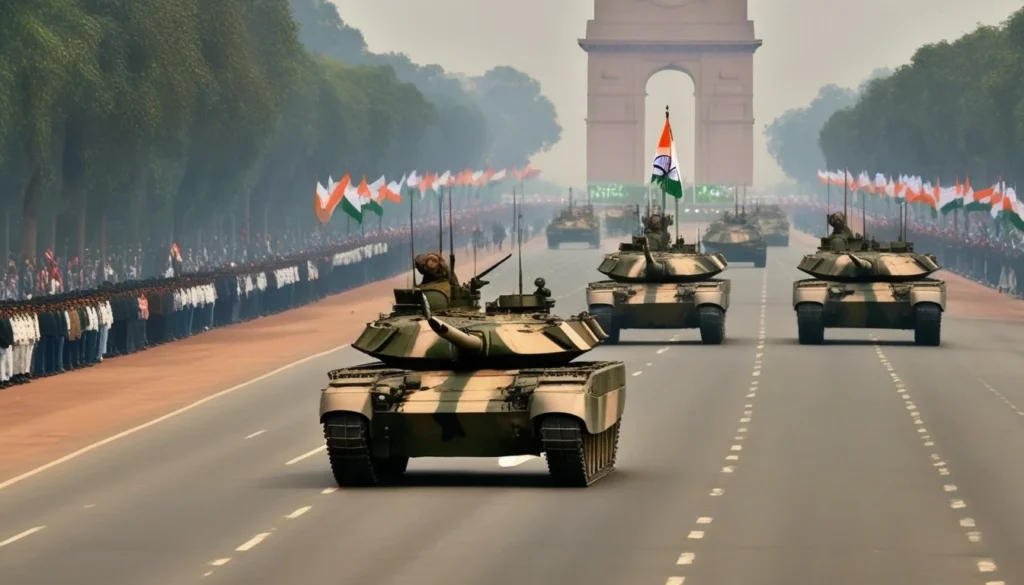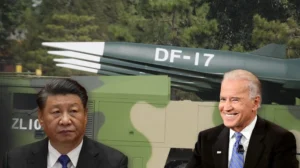Source : ABP News

by Ranjit Kumar
New Delhi: Amid heightened military tensions with China and war clouds hovering over the Eastern Ladakh region, where Chinese soldiers intruded into the Indian territory almost four years ago, the Narendra Modi government has sanctioned a modest hike of 4.72 percent in India’s defence budget for 2024-25. India’s defence budget over the last two years saw a clear imprint of China’s aggression in Eastern Ladakh, as the government had to make heavy additional provision to enable armed forces to be ready to counter any further aggression on the undemarcated 3,488-km-long border. China has deployed more than 50,000 soldiers, an unprecedented move posing threat to Indian sovereignty, on the Eastern Ladakh sector of India-China border. To deter the Chinese forces from further advancing into Indian territory, right from Arunachal Pradesh to Ladakh, the Indian armed forces had to make matching deployment and make emergency procurement and acquire new weapon systems.
This year’s overall defence budget of ₹6,21,000 crore has seen a nominal rise of 4.72 percent over the previous year’s ₹5,94.000 crore, but allocations under capital and revenue outlay has been substantially increased, compared to previous years before the Chinese intrusion. Out of the total provision this year, the finance ministry has allocated ₹1.72 lakh crore, which is 9.4 percent more than the previous year’s revised allocation, for hardware acquisitions under the capital outlay, which was ₹1.62 lakh crore last year. Also, the expenditure under the revenue head other than salary and pensions has also been given a nominal hike, rising up to ₹92,0488 crore, which was ₹90,000 crore in 2023-24. During 2022-23, the provision for revenue expenditure was only ₹62,431 crore, a jump of 44 percent was provided in the 2023-24 budget because of urgent requirements to counter the Chinese challenge. The government has continued with the increased provision in the 2024-25 budget under the capital and revenue heads.
Share of non- salary revenue allocation continues to be substantially higher in the last two year’s defence budget because of heavy additional deployment of Chinese forces on the Line of Actual Control (LAC) in Eastern Ladakh. Hence, allocation under revenue head has seen a heavy jump of 48 percent from 2022-23 during which Indian armed forces had to face the most severe challenge. Budgetary allocation for capital expenditure has mostly been diverted during this period to fill the critical capability gaps. According to the defence ministry, the enhanced budgetary allocation will facilitate in equipping the armed forces with state-of-the-art niche technology lethal weapons, fighter aircraft, ships, platforms, unmanned aerial vehicles, drones, specialist vehicles etc.
The enhanced allocation will also help execute the plan to modernise the Su-30MKI fighter fleet along with the additional procurement of aircraft, acquisition of advanced engines for existing MiG-29 fleet, acquisition of transport aircraft C-295 and missile systems will be funded out of the budget being allocated, so that the Indian armed forces are ready to face any bigger challenge from China. Since India is also facing a two-front war scenario, the country needs to be adequately equipped to take on both the rival nations, China and Pakistan, simultaneously.
However, with the current level of defence preparedness, experts doubt the ability of the forces to face a joint onslaught of two rival nations aligned against India.
Why Indian Armed Forces Need More Funds
The money being spent on countering Chinese forces in Eastern Ladakh could have been better utilised to equip Indian forces with a fresh batch of combat aircraft and other weapon systems and platforms, which has been under discussion in various quarters at the highest level for the last one and a half decade.
As is well known, China has deployed hundreds of its fighter aircraft in Tibet and the rear areas, and hence the Indian Air Force also needs to match the Chinese air power. The IAF had plans to acquire 120 medium combat aircraft, which has been under process, but the government could only take piecemeal steps to acquire a few fighters like 36 Rafales and adding some Sukhoi Su-30MKIs. The IAF fighter fleet has gone down over the years and has come to a precariously low level of 30 squadrons, whereas the IAF requires at least 42 squadrons. The process to acquire 120 4.5 Generation fighters was set in motion almost 15 years ago, but no decision has yet been taken.
Similarly, the Indian Navy requires to boost its submarine strength to keep the Indian Ocean under constant watch, for which it had been promised six additional submarines to be built in India. The submarines would cost no less than ₹50,000 crore and the 120 fighters would also cost more than that. Likewise, the Indian armed forces require many state-of-the-art weapon systems to take on and deter China from making an ingress into Indian territory.
During a decade of the Modi regime from 2014 to 2024, India’s defence budget has seen only a modest rise. It was $50.91 billion in 2014 , which went up to almost USD 76 billion in 2024. India spends almost 1.89 percent of its GDP on defence, which was almost the same in 2014. During the NDA rule, which though has been extremely vocal on strengthening India’s muscle power to be a force to reckon with, India’s defence preparedness has not kept pace with rising security challenges.
As India has evolved into the fifth largest economies in the world, its defence preparation is not in sync with its economic rise and status. Considering the huge security challenges it faces on its northern and western borders, and in the maritime area that surrounds the country, India has to boost its maritime prowess also to keep the sea lanes of communication free from any interference by state or non-state actors. Though the finance minister has announced a ₹1 lakh crore corpus for long-term funding of R&D projects, including deep defence technology, it is not going to make an immediate impact on the defence preparedness.
Since India’s entire economy is dependent on open maritime trade routes, India has to ensure that they remain operative all 365 days of the year. With over 90 percent of India’s trade being conducted via sea routes, it is vital that India remains prepared to counter any threat to Indian economy. For this, India needs a robust naval and air power, besides ground forces, to deter any threat approaching the Indian shores or borders from China or Pakistan who are spending $225 billion and $10 billion annually, respectively. Accordingly, India needs substantially higher provision from the current $76 billion for the armed forces in the defence budget.
The author is a senior journalist and strategic affairs analyst






